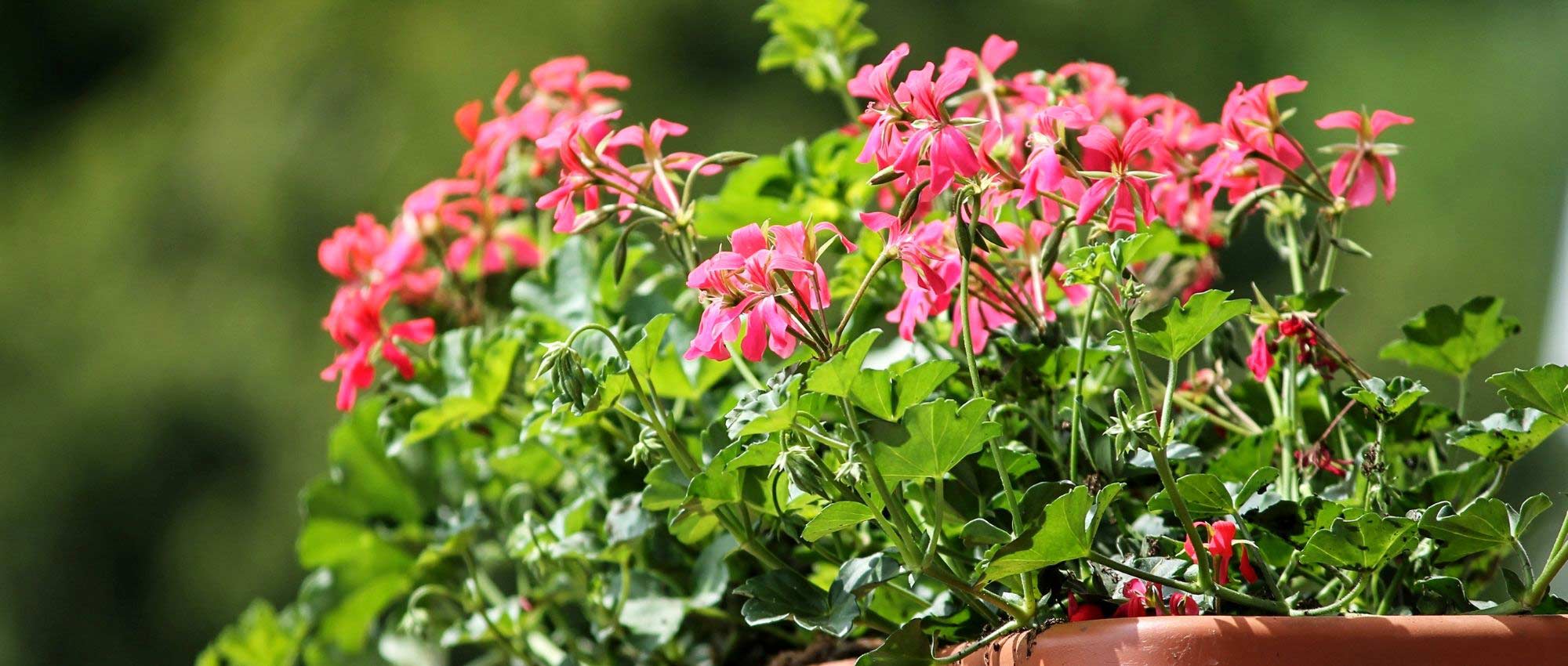
Fertilisers for planters and pots: which to choose?
for an abundant, colourful flowering
Contents
Because they are grown in containers of limited size, potted plants or plants in planters have very limited nutrient reserves. Potting mix can quickly become exhausted and stop feeding the plant. Moreover, these are generally plants for which abundant, long-lasting flowering is expected, such as pelargoniums, pansies, surfinias, begonias, geraniums, lobelias… Fertiliser applications are therefore particularly important to support their flowering. If plants start to suffer nutrient deficiencies, flowering may fade. Discover our range of fertilisers for planters and pots, and follow our advice to choose the most suitable fertiliser!
Why do planters and potted plants need fertiliser?
Potted plants and window-box plants have specific constraints: because they are grown in containers, their supplies of potting compost and nutrients are limited. Their roots quickly explore the entire substrate and take up mineral elements. As the substrate is quickly depleted, nutrients must be added again.
With container volume limited, the plant becomes entirely dependent on supplied nutrients. Fertiliser applications therefore have an immediate effect on these plants.
Moreover, plants in window boxes and containers are the ones expected to produce a generous and abundant flowering, very vivid: for example pelargoniums, surfinias, begonias, geraniums… plants that literally become covered in flowers for an extended period! This obviously requires a lot of energy and resources. It is therefore important to support their flowering throughout the season with regular fertiliser applications.
In general, these fertilisers are also well suited to bedding flowers (begonias, hardy geraniums, gaillardias, cosmos…).
In the case of window boxes containing ornamental-leaved plants (Ipomoea batatas, heucheras, dichondra, coleus, plectranthus, etc.), fertiliser applications are important so that these develop attractive, well-coloured and abundant foliage. In this case, nitrogen-rich fertilisers are preferred, since this element promotes balanced growth and well-developed leaves. Conversely, if the plant were deficient, leaves would tend to discolour and turn yellow…
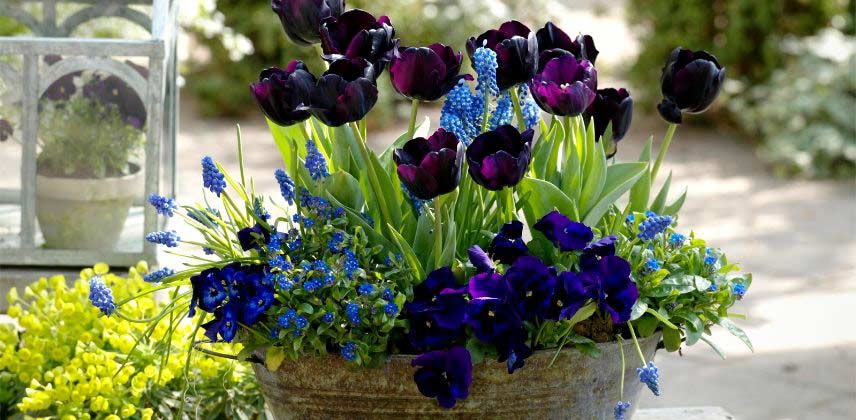
A container arrangement with tulips ‘Queen of the night’, pansies and muscari (photo Friedrich Strauss – Biosphoto)
Read also
Create a spring planter: 7 ideasWhich fertiliser to choose?
To ensure generous flowering, priority for plants in pots and planters is to provide potassium. Phosphorus is also important, as it promotes a well-developed root system and good flowering. As for nitrogen, since it encourages vegetative growth, it is of less interest to us, except for containers and planters that include decorative foliage. In that case, choose balanced fertilisers, with equal values of nitrogen, phosphorus and potassium.
These are the most environmentally friendly fertilisers. They are available in solid (granules) or liquid form.
- Solid form :
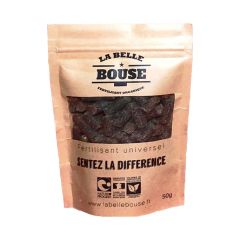
Fertilisant La Belle Bouse - Engrais naturel 100% BIO et local
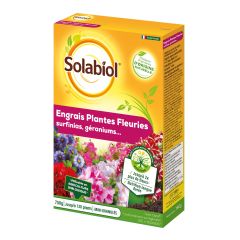
Engrais géraniums et plantes fleuries Solabiol en boite de 750 g
Also discover Tonnerre d’engrais, natural fertiliser, practical and economical and perfectly suited to plants in pots. Olivier presents it on video!
- Liquid form :
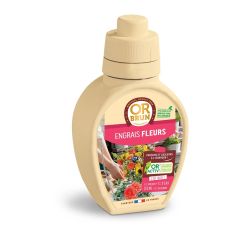
Engrais liquide Fleurs Or Brun en bidon de 250 ml
Finally, to learn more about pelleted manure and how to use it, read our dedicated factsheet.
Although we primarily recommend using natural fertilisers suitable for organic agriculture, chemical fertilisers can be a practical and effective solution to prevent deficiencies. Properly dosed, they do not pose risks.
- Solid form :
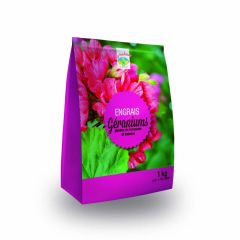
Geranium Fertilizer NPK 10-10-17 + 3MgO in a 1Kg Mini-pack
- Liquid form :
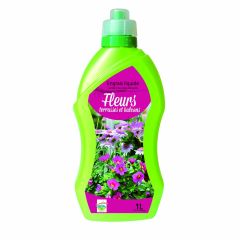
Liquid flower fertiliser for terraces and balconies NPK 4-6-6 with trace elements, 1L.
To discover:
- Our advice sheet for choosing the right fertiliser for flowerbeds, vegetable garden, trees and bushes and plants in pots.
- Latest innovations for balconies, terraces and small gardens
- Subscribe!
- Contents
































Comments